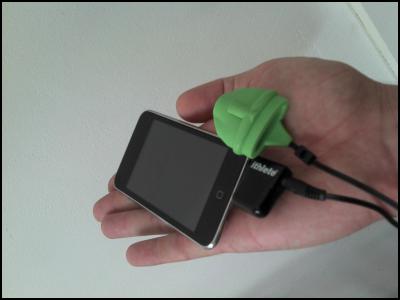Smartphones as Mini Medical Labs Is A Smart Idea
Tuesday, 4 December 2011
Smartphones as Mini
Medical Labs Is A Smart Idea
Imagine your smartphone becoming a mobile
medical laboratory that records and sends data for a range
of research. That will soon be a reality thanks to the
expertise and impatience of a University of Sydney PhD
candidate.
“This method makes heart rate research more inexpensive, portable and straightforward,” said James Heathers, the PhD student from the University’s School of Psychology who came up with the idea.
Data on tiny fluctuations in our heart rate provides critical information on the state of our nervous system, and is essential for a range of psychological research including on anger, anxiety, stress and self-control. It is also used to monitor people’s health after operations and has wide applications in sports science.
At the moment heart rate variability (HRV) research is done in a university laboratory with a group of study participants. Electrodes are attached to their chests to measure HRV and the data is recorded, one person at a time, using a laboratory computer.
“The idea struck me because I’m by nature impatient and my area is psychophysiology – which is all about the relationship between physiological and psychological states. As part of that, I spend a lot of my time thinking about designing better systems to get the data I need – but faster.”
“In a nutshell, I realised the problem was how to get this very useful data more quickly and cheaply. By providing people with a sensor and then using their smartphone to process the data we are no longer tied down to booking appointments in a university laboratory, and can record dozens of separate data streams at the same time.
“The sensor, placed on a finger instead of using electrodes on the chest, is so small we can mail it to study participants.”
To make his idea
a reality Heathers collaborated with Simon Wegerif, a
biomedical engineer.
Wegerif’s company, HRV Fit Ltd,
already had an HRV phone app - iThlete -
widely used by professional sports teams and athletes, for
whom heart rate variability is an important measurement of
their performance and recovery.
The challenge was to
adapt a similar app into a tool that can collect and provide
HRV data in a way that is useful to researchers.
“We have run tests of our sensor linked to a smartphone and the software is working very well. I expect it to be up and running – and available for free – in the next few months,” said Heathers.
The risk of contamination of results being collected outside the laboratory can be addressed by accepted quality controls such as checking consistency of data.
Heathers plans to use the HRV data to expand theories on the day-to-day fluctuations of the nervous system, and to collect data from groups who are traditionally hard to access.
“This new device will be a huge help in my own research but also has fantastic potential for the research area in general, and I want everyone to have access to it to pursue their own work.”
Heathers has
just presented his concept at the Australasian Society for
Psychophysiology conference.

Picture: Smartphone Pulse Rate Variability device
ENDS


 The Conversation: As More Communities Have To Consider Relocation, We Explore What Happens To The Land After People Leave
The Conversation: As More Communities Have To Consider Relocation, We Explore What Happens To The Land After People Leave Bill Bennett: Satellite TXT expands, how Egmont Village got a fibre network
Bill Bennett: Satellite TXT expands, how Egmont Village got a fibre network Community Access Media Alliance: Proposed Spectrum Fee Increases Threaten New Zealand’s Community Access Media Sector
Community Access Media Alliance: Proposed Spectrum Fee Increases Threaten New Zealand’s Community Access Media Sector Brewers Association: Brewers Association Of New Zealand Supports Modernisation Of Alcohol Legislation
Brewers Association: Brewers Association Of New Zealand Supports Modernisation Of Alcohol Legislation Commerce Commission: ComCom Warns Of Pyramid Schemes After South Auckland Scammers Plead Guilty
Commerce Commission: ComCom Warns Of Pyramid Schemes After South Auckland Scammers Plead Guilty MBIE: MBIE Publish Mid-Point Review Of The Phase-Out Of The Low Fixed Charge (LFC)
MBIE: MBIE Publish Mid-Point Review Of The Phase-Out Of The Low Fixed Charge (LFC)



